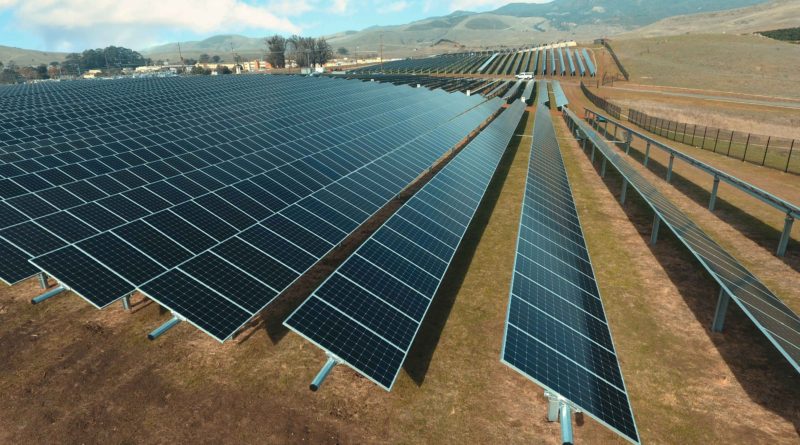New Solar Farm Produces 25% of Cal Poly’s Energy Needs
SAN LUIS OBISPO, Calif. — In January, California Polytechnic State University (Cal Poly) unveiled a farm that has nothing to do with its agricultural department. Is there an interdepartmental rivalry perchance? Nope — the coastal California school has opened a solar farm as part of its initiative to eventually become climate neutral.
The 18.5-acre solar farm will generate more than 11 million kilowatt hours per year, which would be sufficient to power 25 percent of Cal Poly’s energy needs as the campus strives to reach its goal of achieving net-zero energy status by 2050. “This is a huge step toward our goal of climate neutrality, and we are very excited about using this new facility to support students’ hands-on learning,” said Dennis Elliot, the university’s director of energy, utilities and sustainability, in a statement.
The solar farm consists of more than 16,000 individual solar panels and boasts a present capacity of 4.5 megawatts. For a sense of scale, the solar farm could power more than 1,000 single-family homes. To accomplish this, the project employs single-axis tracking technology, which follows the sun across the sky. This results in one-third more energy production than a conventional stationary system. Financing for the solar farm was provided by San Luis Obispo-based REC Solar under a power purchase agreement (PPA) with Duke Energy Renewables of Charlotte, N.C. The arrangement provides Cal Poly the ability to purchase energy at a lower rate and precludes upfront costs for the system’s construction and maintenance. Beyond the environmental benefits of the project, the energy savings accrued over the next 20 years will amount to an estimated $10 million.
“We applaud Cal Poly’s creativity in leveraging the system to inspire research in sustainability for years to come. REC Solar is privileged to be a part of the university’s sustainability journey,” said REC Solar CEO Matt Walz, in a statement.
Incidentally, REC Solar was founded by Cal Poly graduates and is owned by Duke Energy. The company proffers solar solutions for the university and school district markets. To date, the company has seen completion of more than 100 school solar projects. Meanwhile, REC Solar concentrates on developing solar curricula and other means of academic enrichment for school clients. To wit, the solar farm will also function as a working learning lab for students.
Spurring Cal Poly’s climate activities is, in part, the Golden State’s Global Warming Solutions Act of 2006. The act set groundbreaking goals to cut the state’s greenhouse gas emissions to 1990 levels by 2020, and 80 percent below 1990 levels by 2050. The 23-campus California State University system, including Cal Poly, set its own 2014 Sustainability Policy with an eye to exceed the state mandate and seek to reduce its greenhouse gas emissions to 80 percent below 1990 levels by 2040 — a decade in advance of the state goal. In addition to the solar farm, Cal Poly is pursuing its power policy via energy-efficient, LEED-certified campus buildings of which the university currently has seven.

